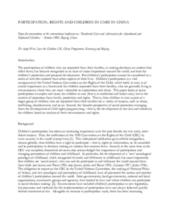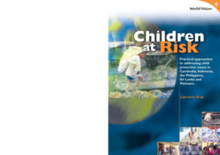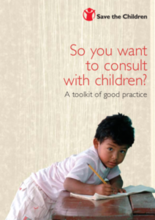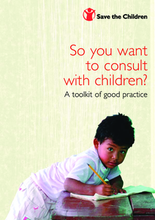Displaying 321 - 330 of 346
Outlines the Butterfly Program in India, which utilizes to an empowerment approach to working with children living and working on the streets of New Delhi. Highlights the importance of child participation and rights.
A guide designed to help incorporate child participation results into relevant projects. Includes current practices and lessons learned, sample project plans, and a list of suggested resources.
Focuses on the work of the Butterflies Programme for Street and Working Children in India. Advocates for participatory approaches in child-focused development work.
This paper defines concepts and highlights key topics around orphaned and vulnerable children. It stresses the importance of creating a child-friendly environment and utilizing a holistic approach to care, both which identify children as central participants in decision-making about care and placement.
Discusses approaches to protecting at-risk children in five Asian countries. Identifies programming and policy measures that effectively address child abuse. Emphasis on committing all levels of society to coordinated practical response.
A toolkit of good practices for involving children in consultation and policy processes. Includes an extensive guide to additional resources.
A comprehensive guide to organizing consultations with groups of children or young people, and the role of adults in creating a safe and enabling environment for meaningful child participation.
Programmatic methodology and key steps for reintegrating institutionalized children back into the community in a post-conflict environment. Contains comprehensive assessment toolkit in document annex.
This paper describes a qualitative research study conducted in three villages in Malawi. It explores community mobilization and kinship care, as well as striking discrepancies between the perceptions of adults and children regarding care and support. The paper advocates for increased child decision-making, childcare protection policy, and support networks for orphaned children.
This paper outlines the response of Save the Children to the civil war outbreak in Liberia. Using the concept of child participation, the organization was able to address the needs of the children, which included family tracing and reunification, child protection and education.









